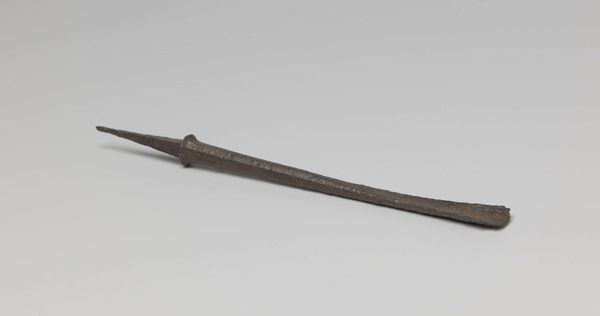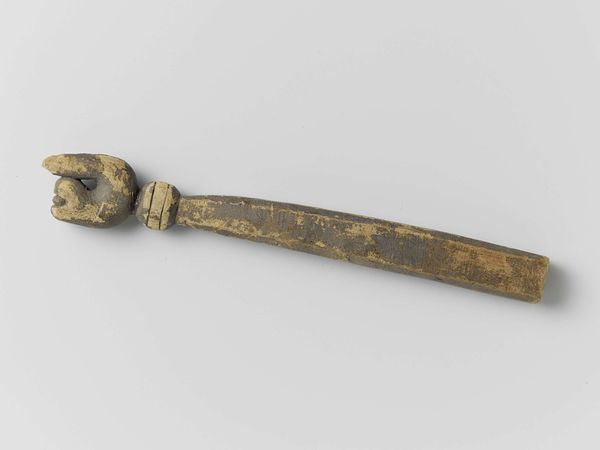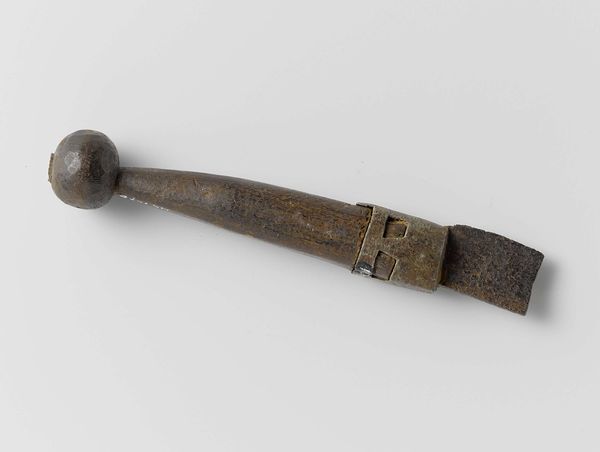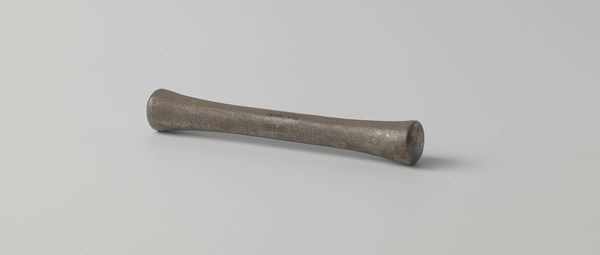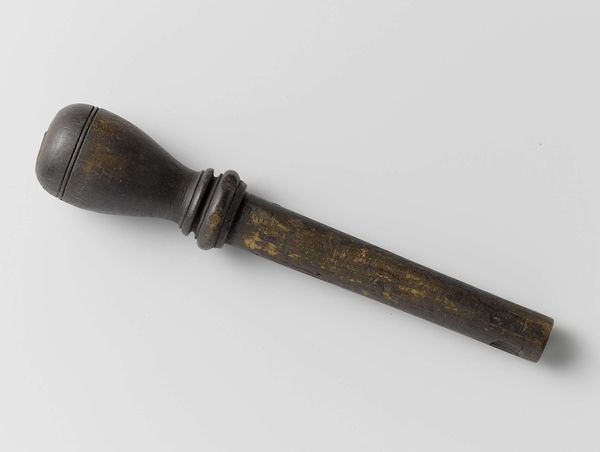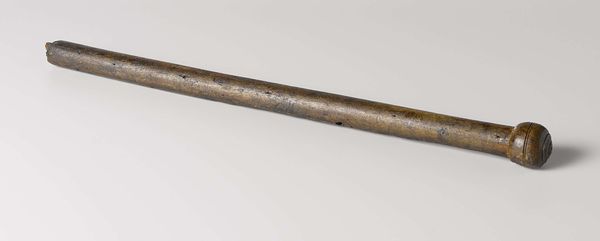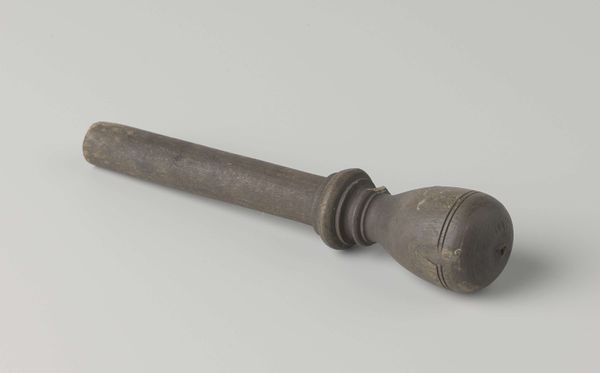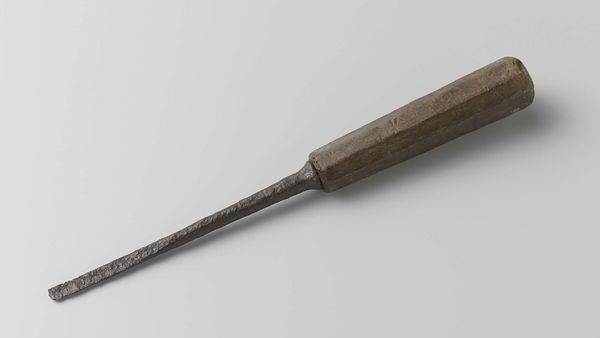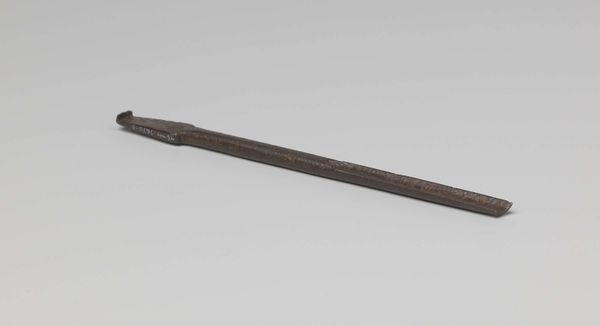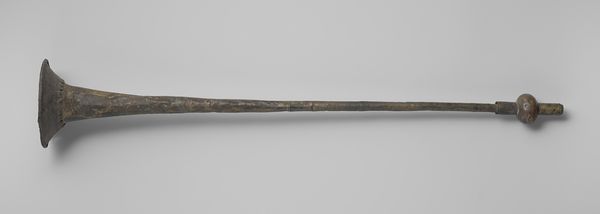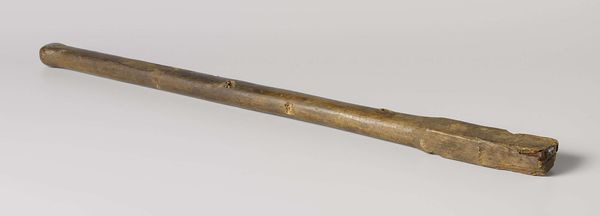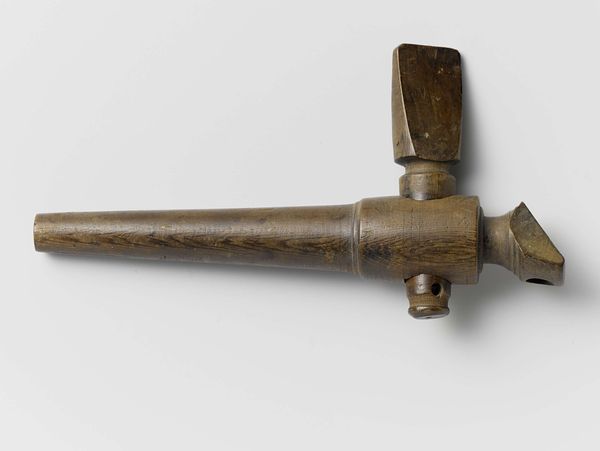
metal, sculpture, wood
#
medieval
#
metal
#
stoneware
#
sculpture
#
wood
Dimensions: length 15.7 cm, diameter 2.8 cm
Copyright: Rijks Museum: Open Domain
Editor: This object is listed as “Boutdrevel met één puntig uiteinde en een ronde knop,” made around 1590 by an anonymous artist. It looks to be made of metal, judging from the texture and the way the light reflects on its surface. What stands out is its simplicity, it's such a basic tool, but undeniably essential. How should we interpret an object like this? Curator: Consider how fundamental the nail is to construction and creation. Even today, we use the phrase "nailing it" to signify success. But go back further; think about the Crucifixion, how the nails used in that event became powerful religious symbols, representing both suffering and salvation. Do you see the continuity? Editor: That's fascinating. I hadn’t connected it to religious iconography immediately, I was thinking more about everyday labor and the Renaissance workshop. So, the nail, in essence, becomes a container for collective memory and belief? Curator: Precisely. Its very form embodies both practical application and deep-seated cultural meaning. Even the act of hammering – the force, the rhythm – evokes primal human actions, persistent through time. What feelings arise when you think of such cultural memory imbued in an everyday object? Editor: It makes me rethink the meaning we ascribe to objects, even mundane ones. The idea that something as simple as a nail can carry such weight across centuries... it’s kind of humbling, actually. Curator: It illustrates that symbols are all around us. History echoes, and sometimes it does so in the most unexpected of places and forms. We learn from the past by recognizing what came before us in our culture. Editor: I never would have thought to see that kind of depth in just a nail! Thanks, I’ll definitely look at other “simple” objects differently now.
Comments
No comments
Be the first to comment and join the conversation on the ultimate creative platform.

